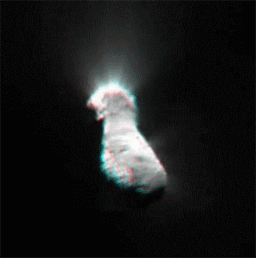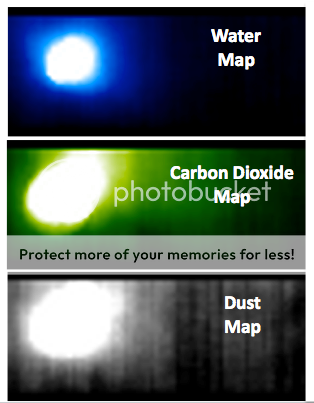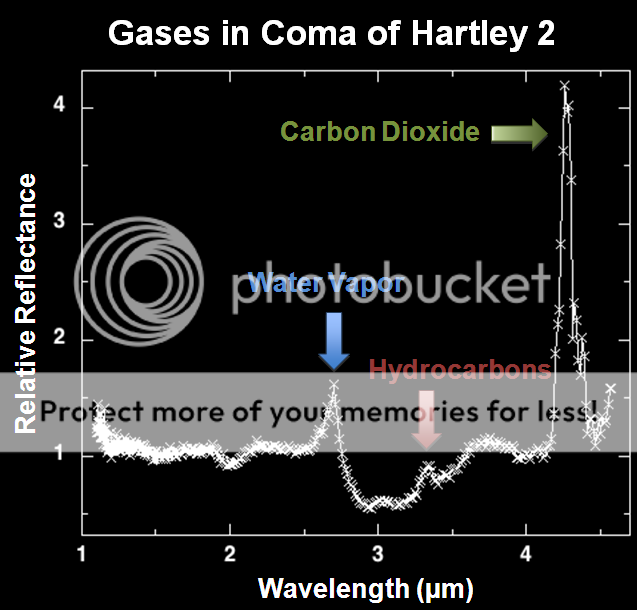E
EarthlingX
Guest
http://www.jpl.nasa.gov : Flight of the Comet
http://www.planetary.org : Hartley 2 compared to other comets, and in motion 3D
[youtube]http://www.youtube.com/watch?v=5IlnueAk1dM[/youtube]
...November 05, 2010
This video clip of the flyby is comprised of 40 frames taken from the spacecraft's Medium-Resolution Instrument during the encounter. Image credit: NASA/JPL-Caltech/UMD/Brown University
This video clip was compiled from images taken by NASA's EPOXI mission spacecraft during its flyby of comet Hartley 2 on Nov. 4, 2010. During the encounter, the spacecraft and comet whisked past each other at a speed of 12.3 kilometers per second (27,560 miles per hour). The spacecraft came within about 700 kilometers (435 miles) of the comet's nucleus at the time of closest approach.
"While future generations should have the opportunity to truly explore comets, this flyby gives us an excellent preview of what they will get to enjoy," said EPOXI principal investigator Michael A'Hearn of the University of Maryland, College Park. "Hartley 2 exceeded all our expectations in not only scientific value but in its stark majestic beauty."
The video clip of the flyby is comprised of 40 frames taken from the spacecraft's Medium-Resolution Instrument during the encounter. The first image was taken at about 37 minutes before the time of closest approach at a distance of about 27,350 kilometers (17,000 miles). The last image was taken 30 minutes after closest approach at a distance of 22,200 kilometers (13,800 miles). The spacecraft was able to image nearly 50 percent of the comet's illuminated surface in detail.
http://www.planetary.org : Hartley 2 compared to other comets, and in motion 3D
..Nov. 5, 2010 | 16:17 PDT | 23:17 UTC
By Emily Lakdawalla
I had to catch up with tasks left undone at home today and didn't have time to write up my notes from the Hartley 2 press briefing, for which I apologize. I'll leave you for the weekend with three cool Hartley 2 pictures.
First, I've composed a montage of all five comets whose nuclei have been imaged directly by spacecraft, to scale with each other, sized for inclusion in your favorite digital presentation software. Hartley 2 is the smallest comet ever visited by a spacecraft!
...
Comets visited by spacecraft
As of November 5, 2010, five comet nuclei had been directly imaged by flyby spacecraft. They are shown here to scale with each other, at 20 meters per pixel (in the click to enlarge version). Credit: Halley: Russian Academy of Sciences / Ted Stryk. Tempel 1 and Hartley 2: NASA / JPL / UMD. Borrelly: NASA / JPL / Ted Stryk. Wild 2: NASA / JPL. Montage by Emily Lakdawalla.
...
...
3D animation of comet Hartley 2's nucleus
Use red-blue glasses to see the 3D effect. To compose this animation of the nucleus of comet Hartley 2, Daniel Macháček used Squirlz Morph to morph among the five images of the nucleus that were released by the Deep Impact team on the day of the flyby, November 4, 2010, in a process explained here. Then Luca Cassioli took sequential frames from the morphed animation and used them as left and right images in this animated GIF. Credit: NASA / JPL / UMD / Daniel Macháček / Luca Cassioli
[youtube]http://www.youtube.com/watch?v=5IlnueAk1dM[/youtube]














